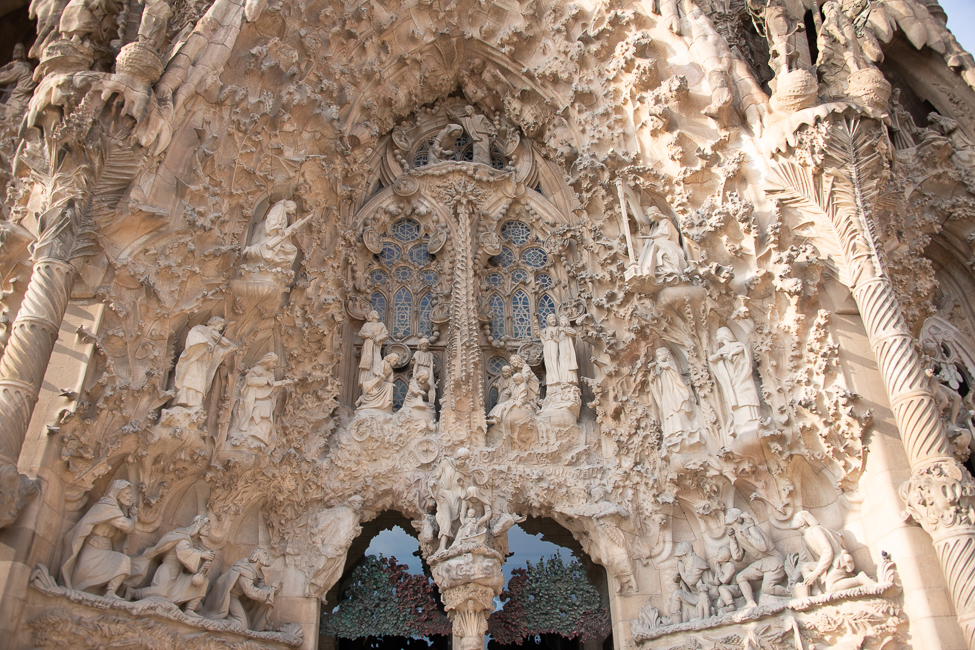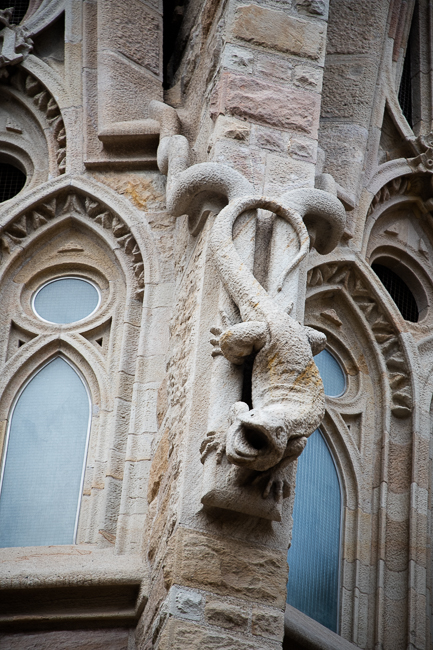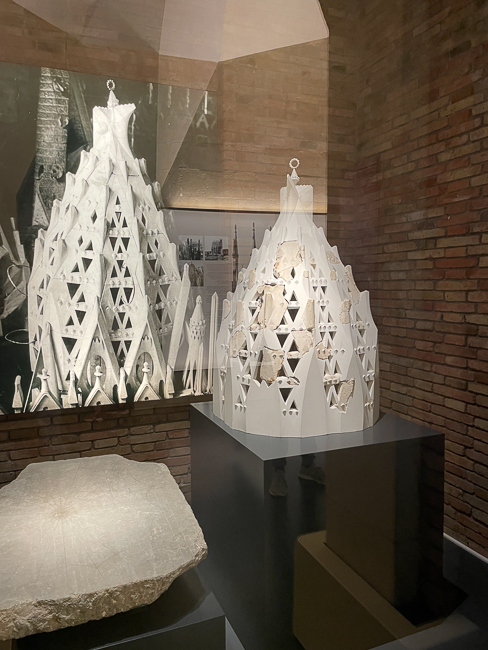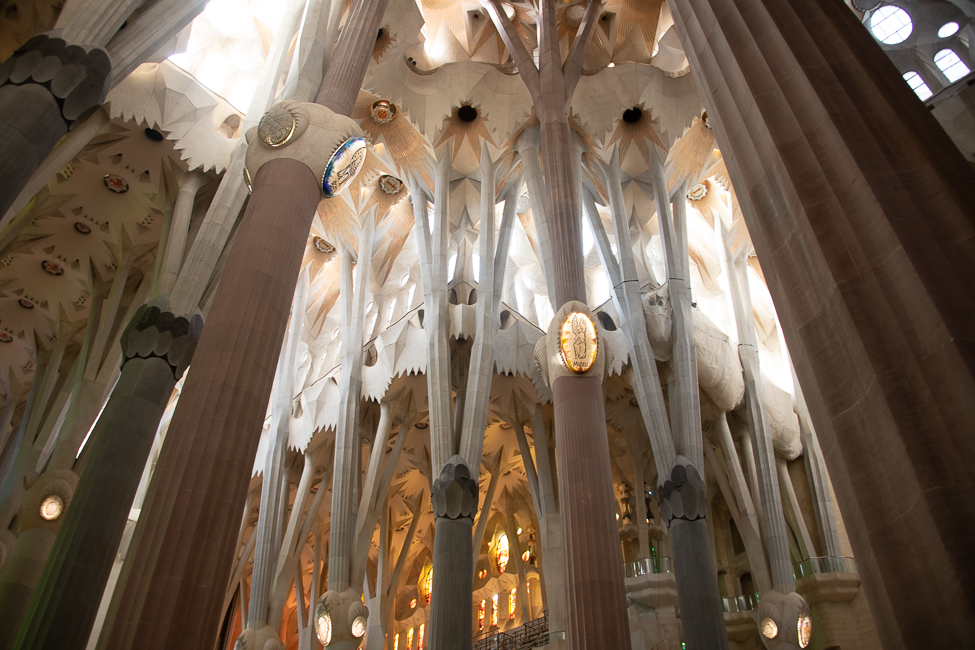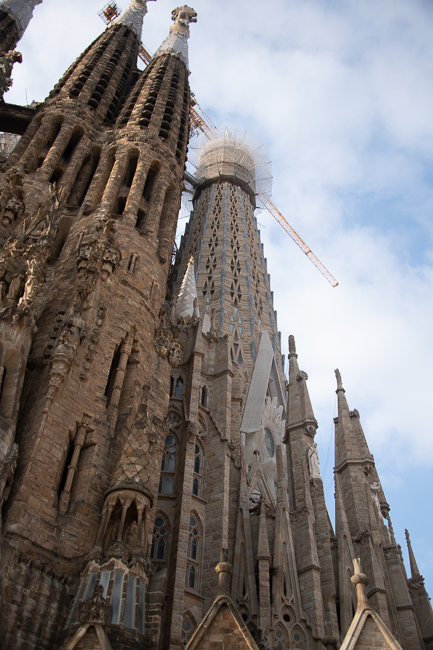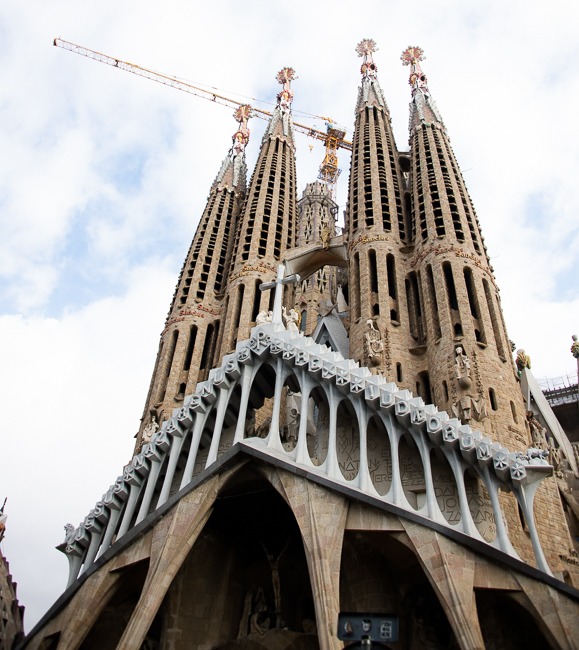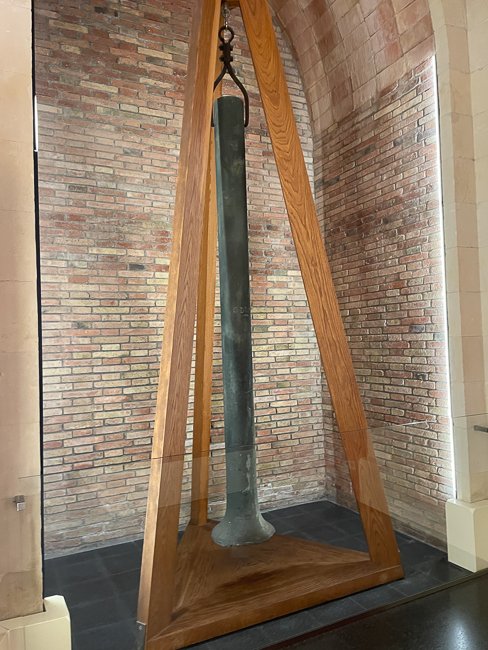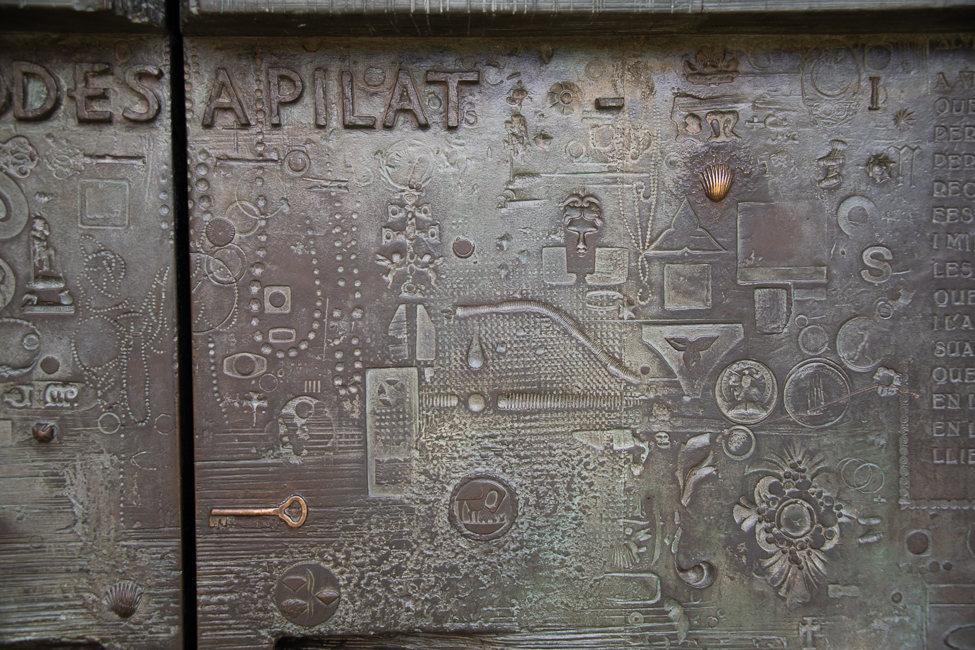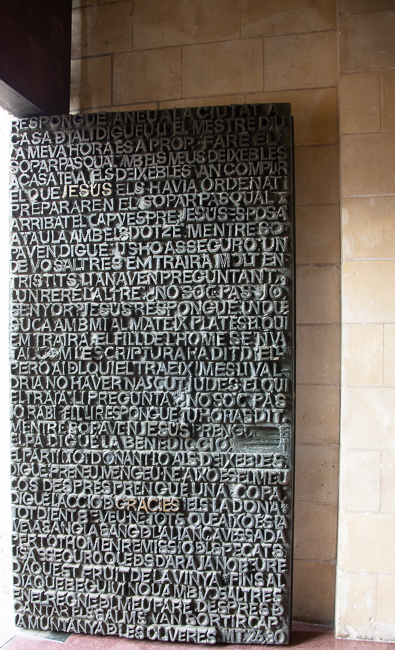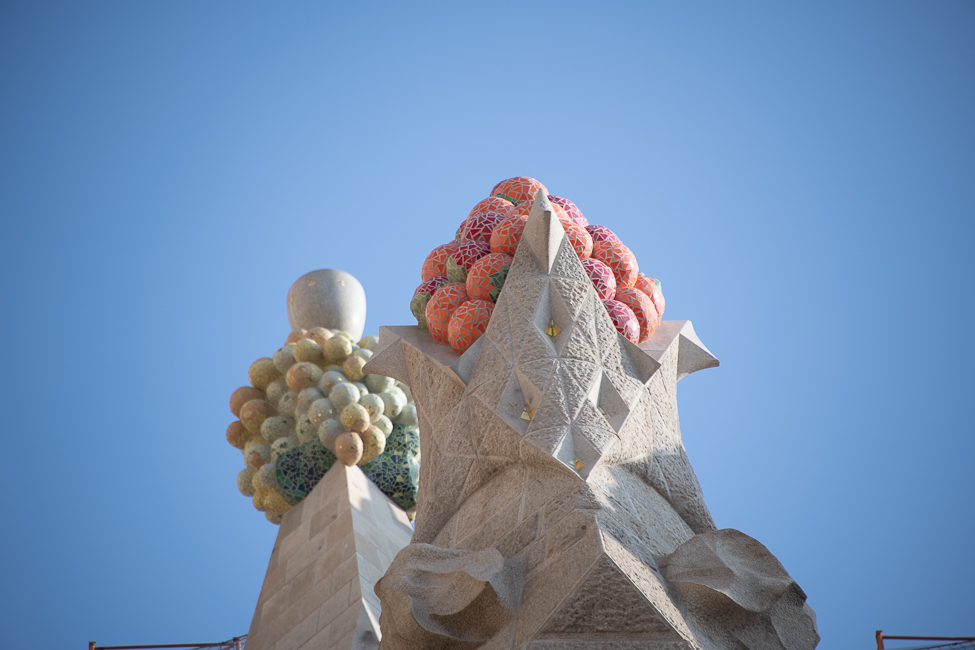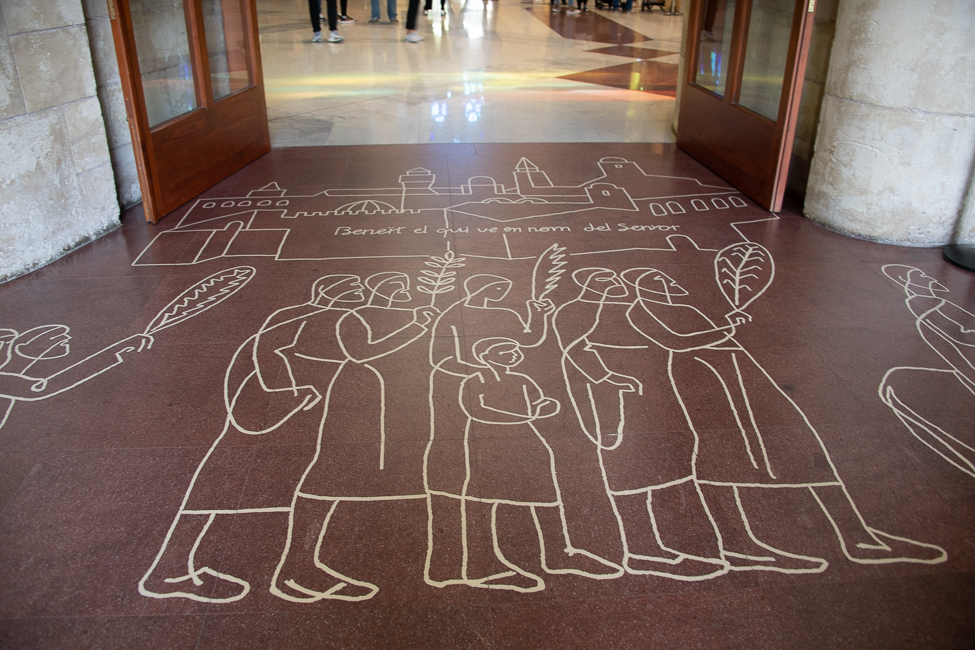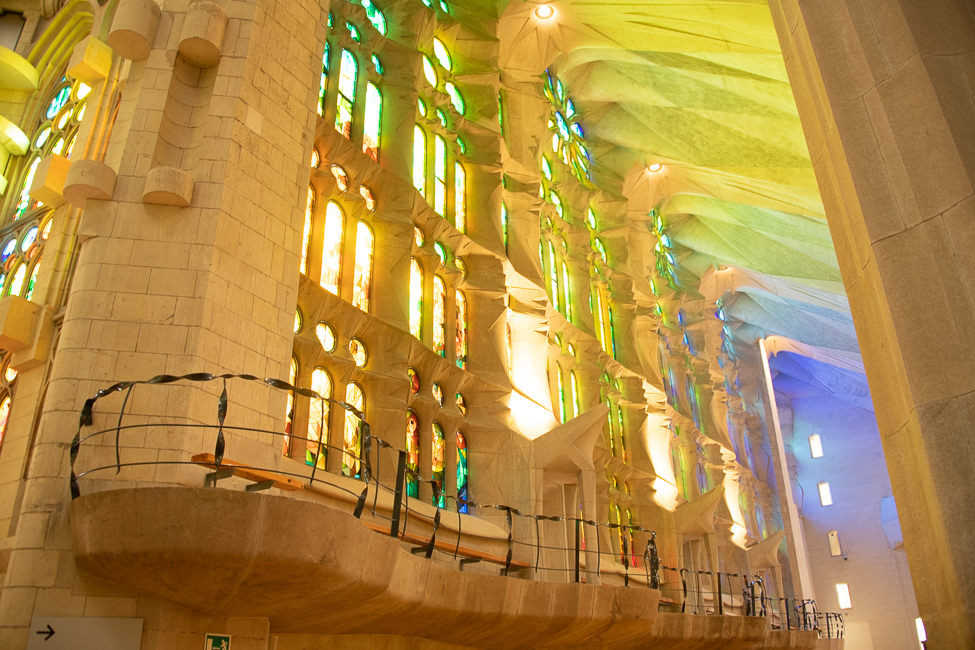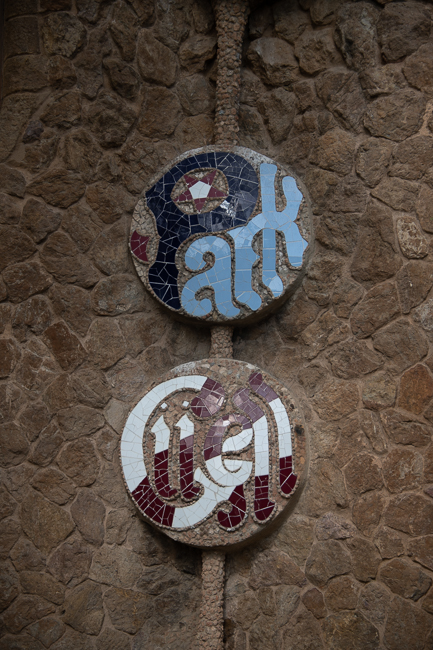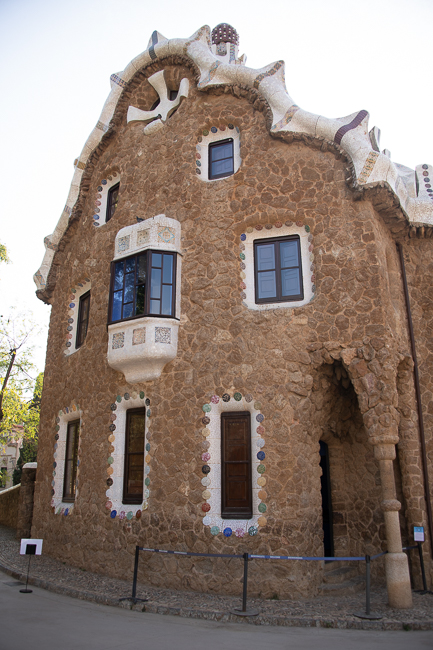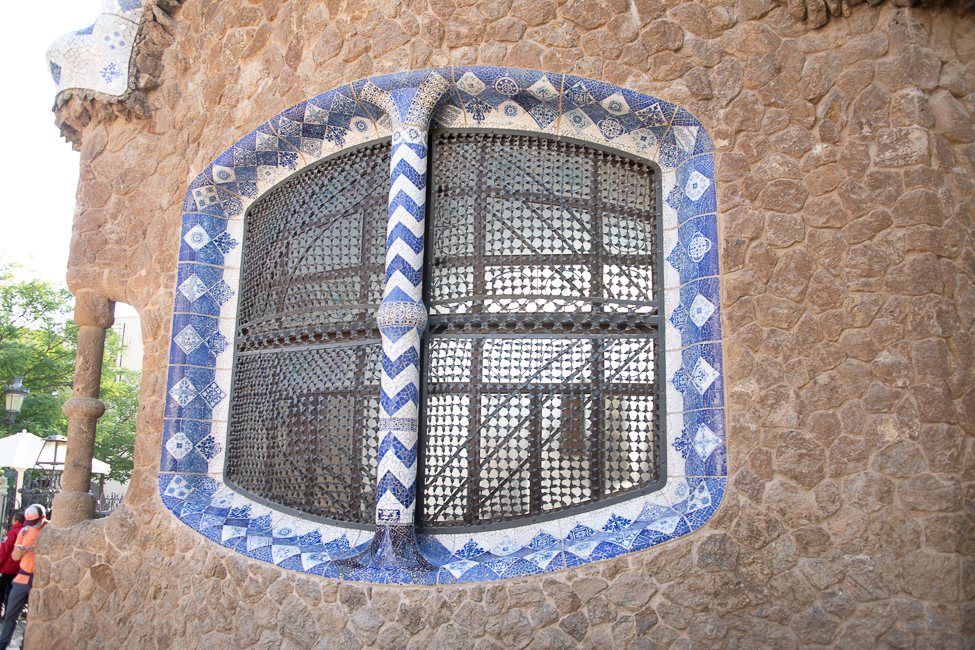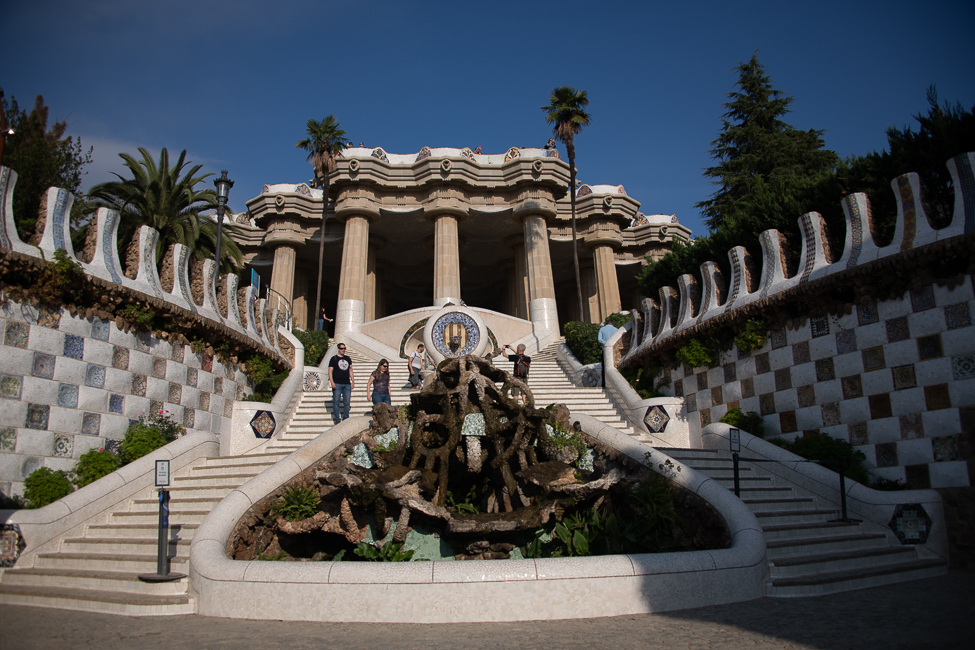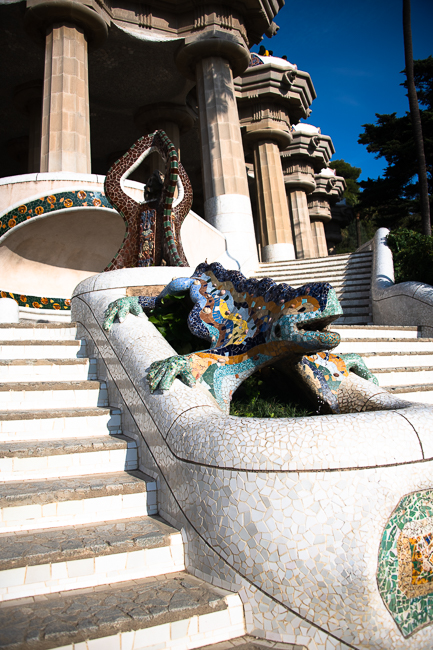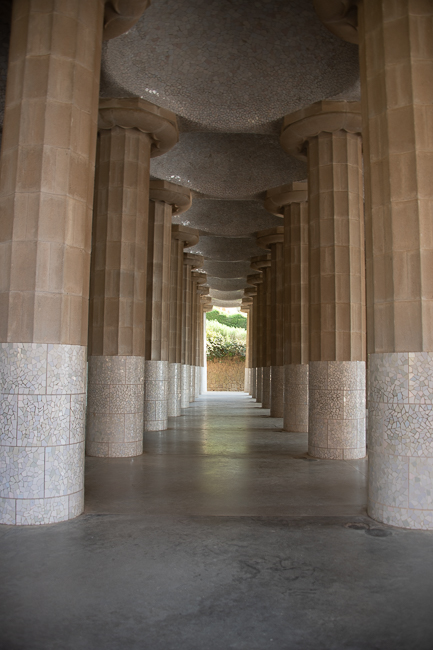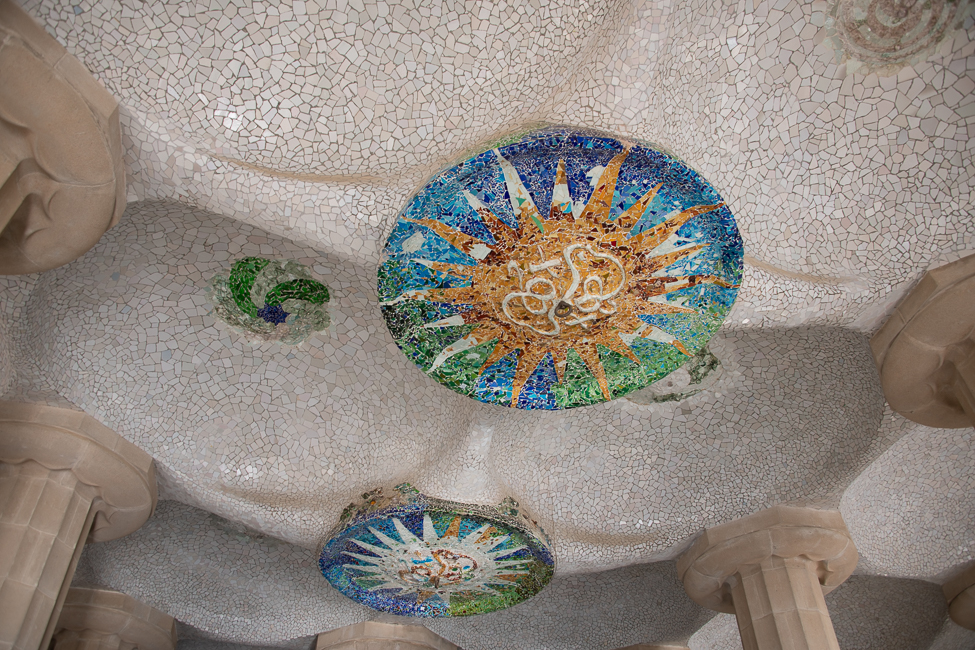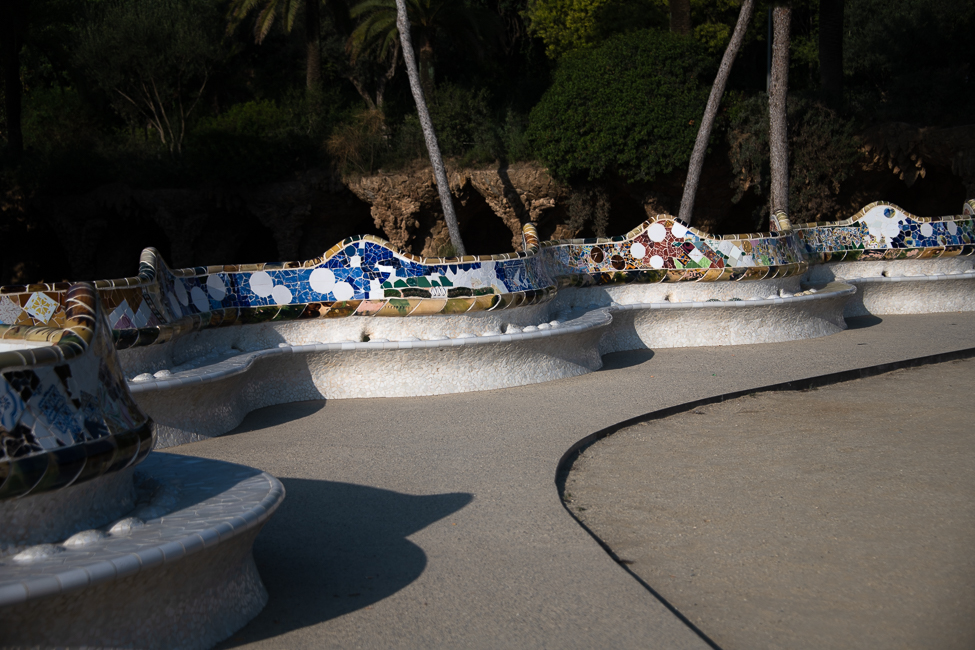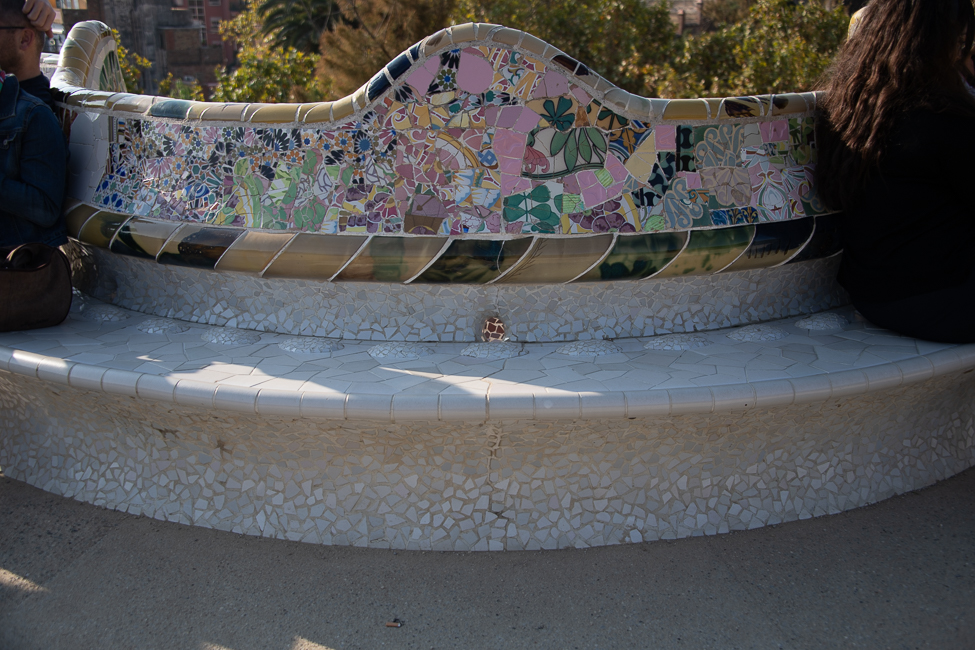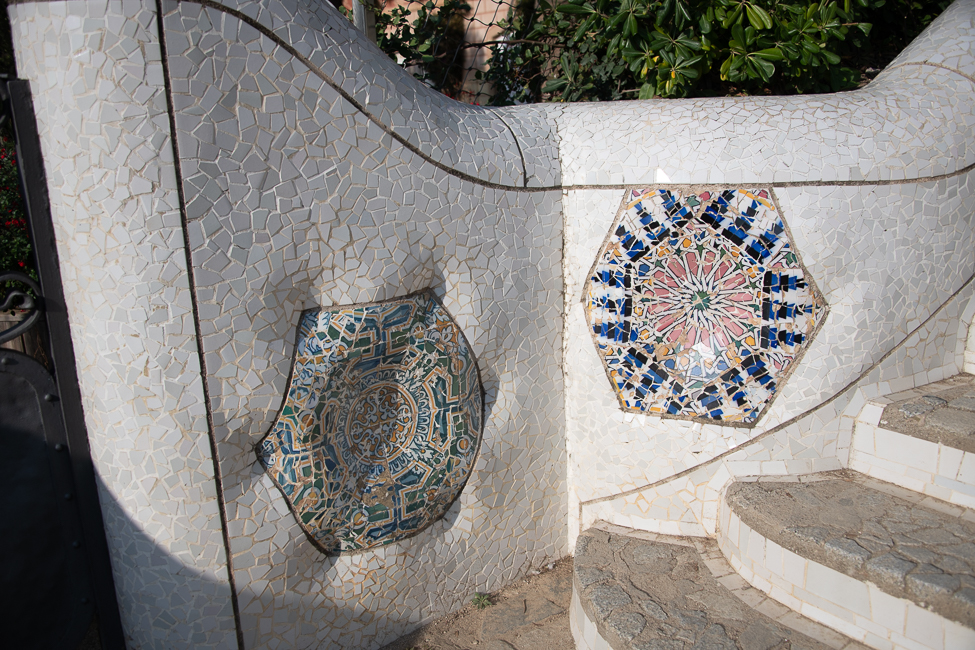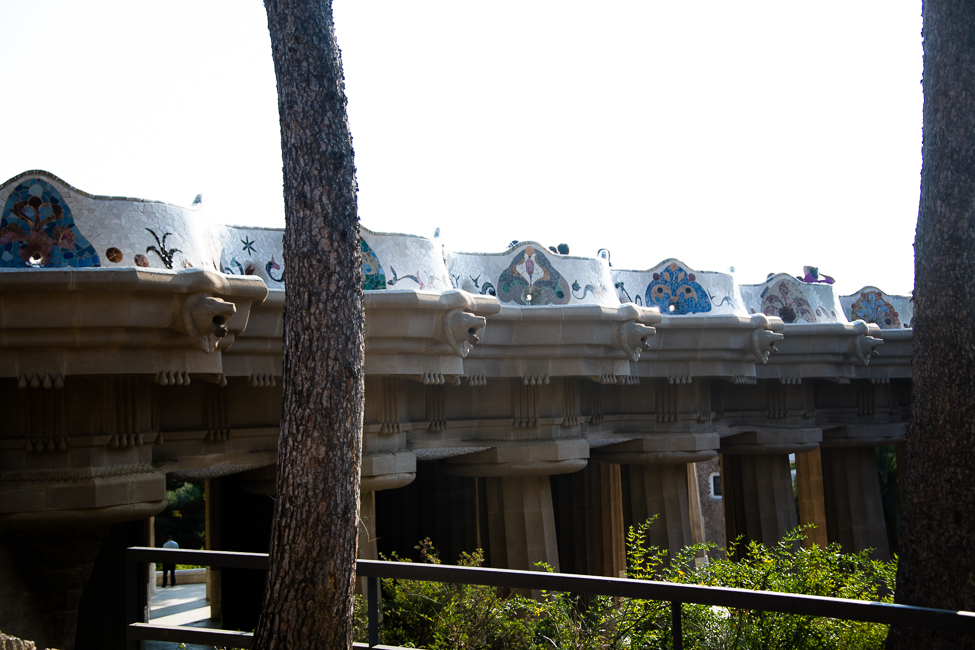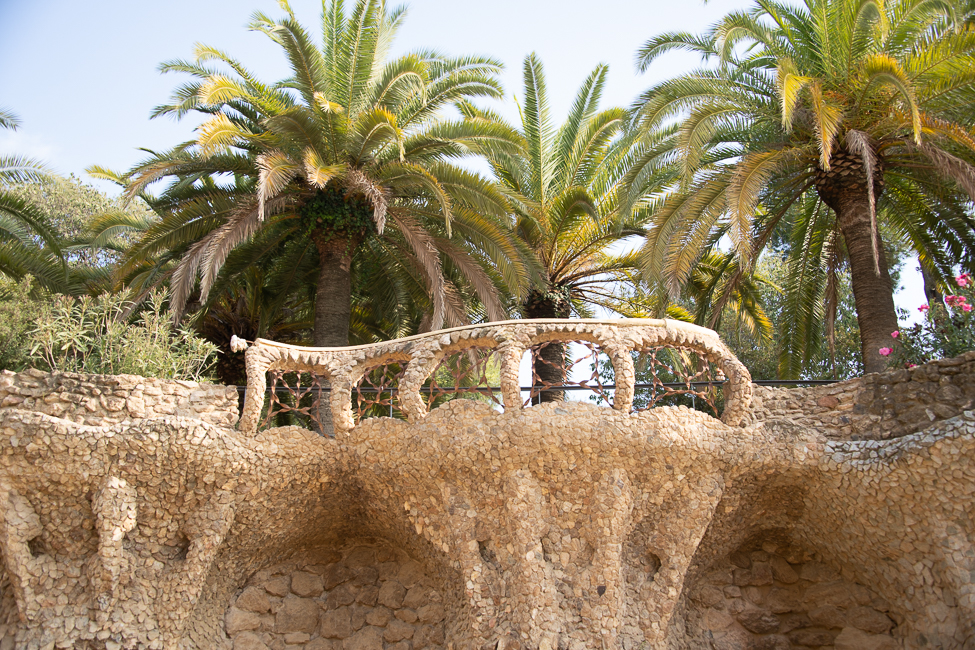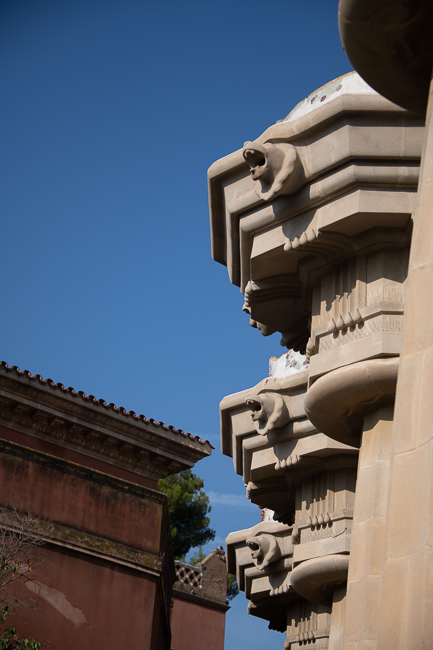October 2021
What do you say about any Gaudi building in Barcelona? They have been photographed, published, visited, and shown on TV, ad nauseam. But what would be posts about Barcelona without Gaudi. Let us begin with his two most well known projects.
La Sagrada Familia – Basilica of the Holy Family
To begin with, it is truly impossible to capture the entire Basilica in one photograph. If you get far enough back, you are in a lovely park, and the trees block your view.
There is so much occurring on the front of the Basilica, which is called the Nativity Facade, that it would take a lifetime to absorb.
Construction of the Sagrada Família began under architect Francisco de Paula del Villar in 1882. A year later Villar quit and Gaudí took over as chief architect, transforming the project with his own architectural and engineering style, combining Gothic and Art Nouveau forms.
Construction has been going on for 136 years. When still alive and asked why the building was taking so long, Gaudi replied, “My client isn’t in a hurry.” When La Sagrada Familia is completed, it will have taken longer to build than the Pyramids, and only 50 years less than the Great Wall of China. It is expected to be completed in 2026, the centennial of Gaudi’s death.
The city of Barcelona is filled with buildings by Gaudi, but by the end of his life, when he was working on nothing but the Sagrada Familia, he was dressing in rags instead of buying new clothes, so that all his income could go the project, which was being funded entirely by donations. Gaudi died in 1926 and is buried in the crypt underneath the main floor of the Basilica.
His death, was in part due to his wearing rags. He was struck by a tram on one of his daily walks and didn’t receive much medical attention because it was thought he was a vagrant. The next day the chaplain of the Sagrada Família identified him as Gaudi, but by then his injuries had progressed too far and he passed away three days later.
At the Paris Exhibition of 1910, crowds formed long lines to view the plaster model of the building in progress, which then included stone cherubim with wind-propelled wings that would ring bells.
The interior pillars start square as the base, become octagonal, then circular, before transforming into tree-like limbs interlaced at ceiling height, to emphasis that nature is elevated over the handiwork of man.
The existing completed towers each bear words that together spell out a Latin prayer. When told that no one could read the script, Gaudi replied, “The angels can.” When La Sagrada Familia is completed, it will have 18 towers. 12 of the towers will represent the apostles, four of them will represent the evangelists, one will be designated for the Virgin Mary, and the last one, the highest one in the middle, will represent Jesus Christ.
The rear of the Basilica’s facade is called the Passion Facade. The steeples of this portion were completed in 1976, and in 1987 a team of sculptors, headed by Josep Maria Subirachs, began work sculpting the various scenes and details of the façade. Gaudí intended for this façade to strike fear into the onlooker. He wanted to “break” arcs and “cut” columns, and to use the effect of chiaroscuro to show the severity and brutality of Christ’s sacrifice.
The cathedral has its critics and its fans: George Orwell called it hideous and Pablo Picasso said it was a monstrosity, but Salvador Dali declared it “as sensual as a woman’s skin.”
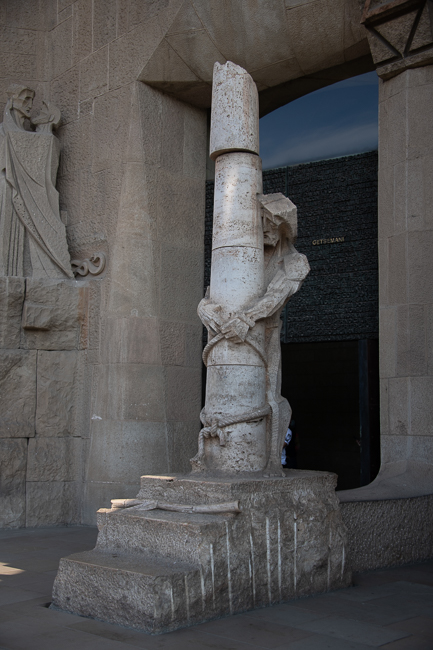 During the Spanish Civil War Catalan anarchists knew better than to destroy the building, so they destroyed all the renderings and models to make it impossible to finish.
During the Spanish Civil War Catalan anarchists knew better than to destroy the building, so they destroyed all the renderings and models to make it impossible to finish.
 In the 1980s computer scientists took scraps of remaining plans, handwritten notes by Gaudi, and photos of the existing construction to determine what the rest was intended to look like, thus speeding up construction.
In the 1980s computer scientists took scraps of remaining plans, handwritten notes by Gaudi, and photos of the existing construction to determine what the rest was intended to look like, thus speeding up construction.
Inside the towers, Gaudi designed a set of tubular bells comprising a carillon covering seven full octaves, which is every note on a piano.
There are several doors at the rear, I was fascinated by the rubbing of the key and the shell on this particular one, that have made them shiny.
The gospel doors on the rear contain text from the New Testament depicting the Passion of Christ. 8,000 bronze characters were used to cast the door.
Fruit atop the towers represent Gaudi’s love of nature and his desire to incorporate nature throughout. The various fruits represent the different seasons.
Gaudi took a very different tack with the use of stained glass in La Sagrada Familia. Gaudí sought out maximum contrast. The most transparent stained-glass windows are those highest up, (in contrast to most churches where they are lower to the congregation) so that the light can stream in and illuminate the mosaics and vaults that characterize the nave.
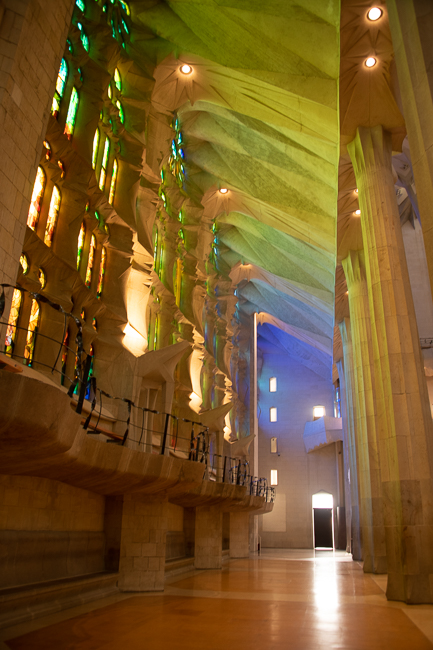 **
**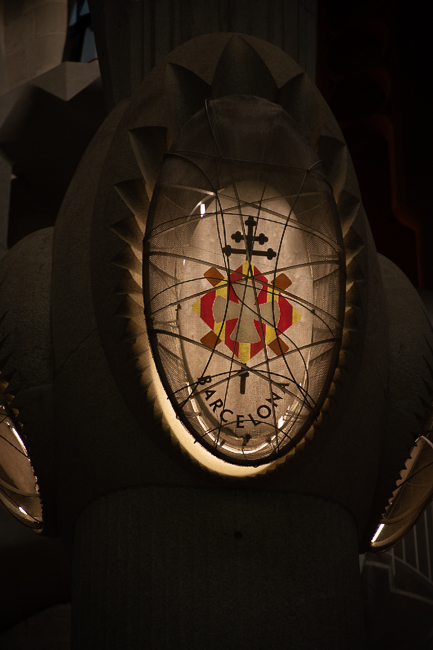 *
*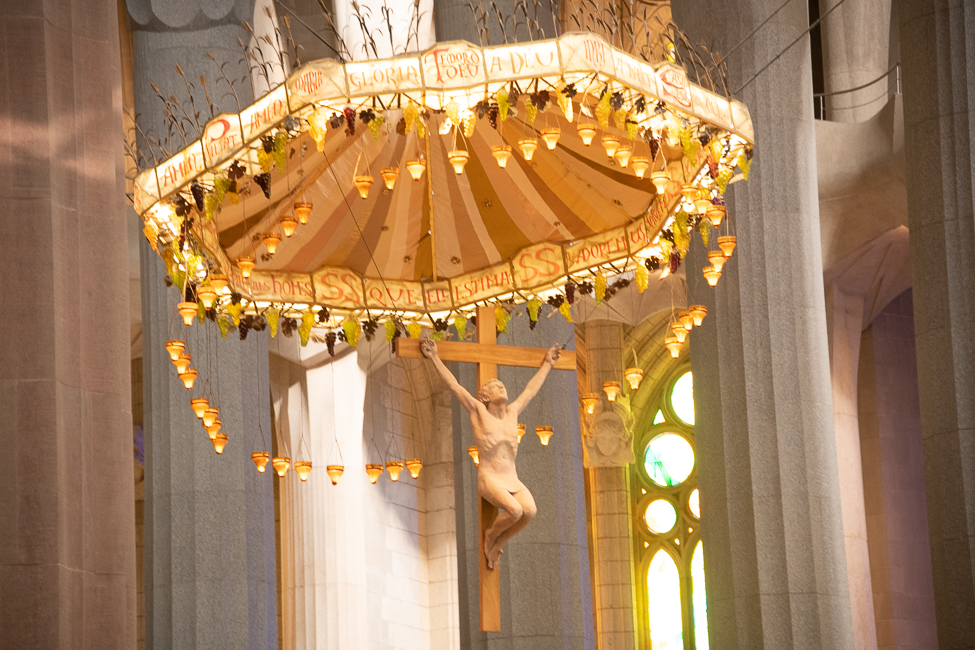 *
*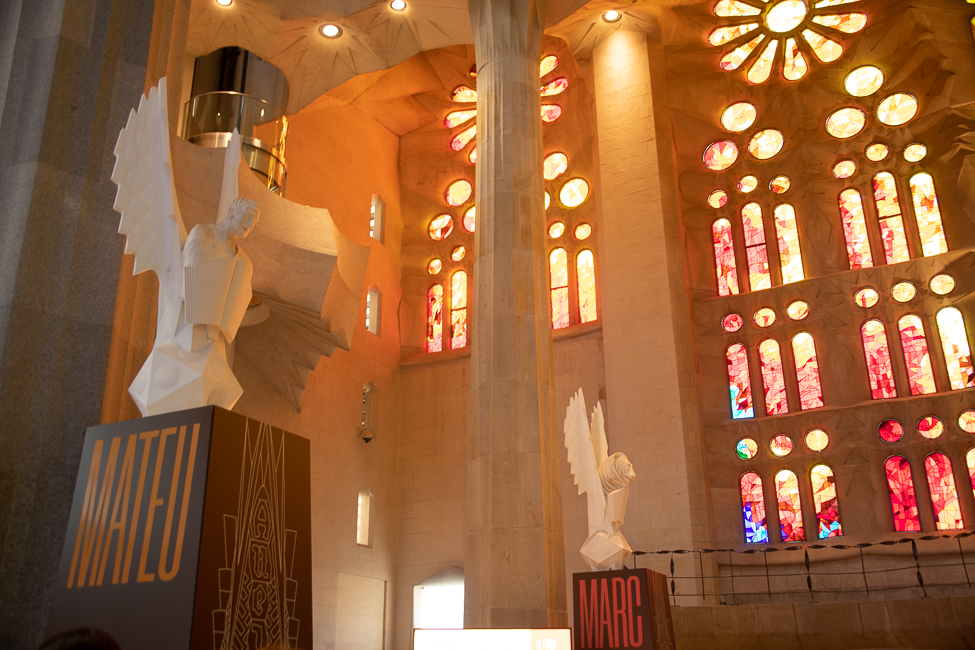 *
*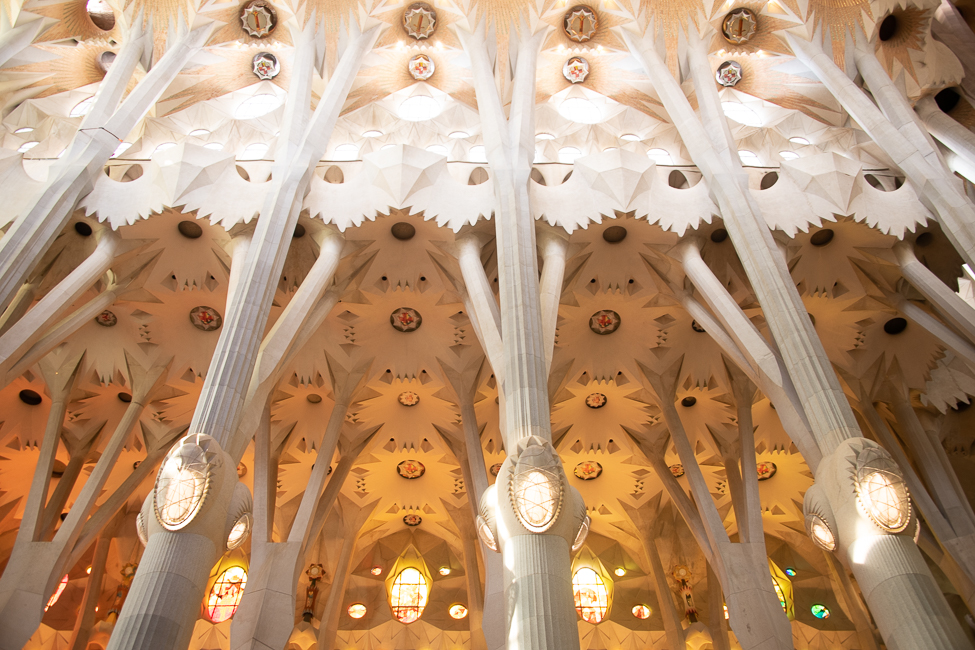 *
*
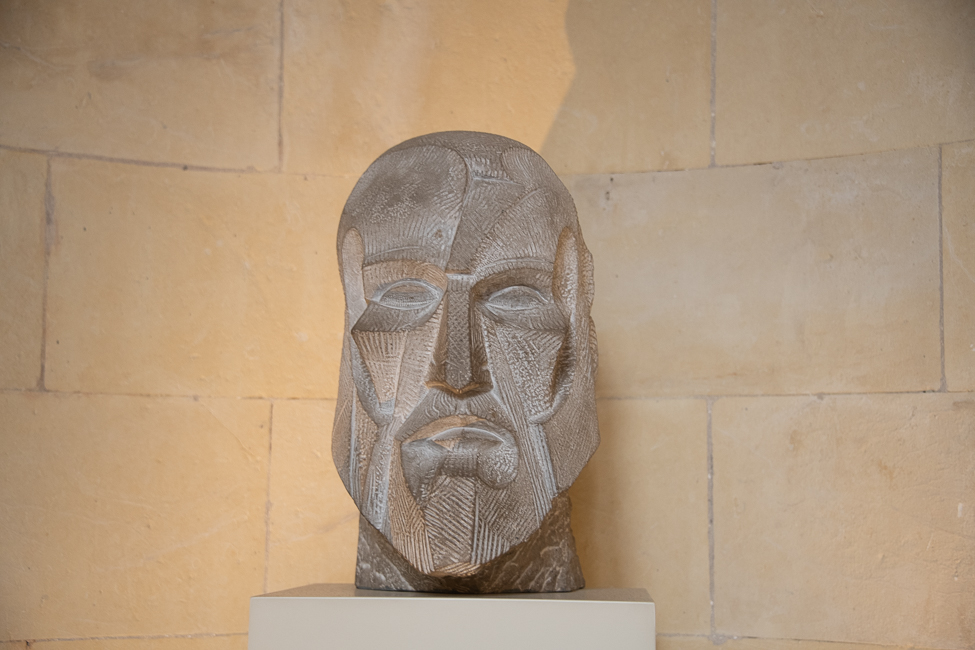
Antoni Gaudi by Josep M. Subirachs
The advantage of visiting during Covid is that the crowds, while still large, were not as overwhelming as one might expect. However, both the crypt and all of the towers were closed to visitors. Return trips are warranted, and needed, when trying to wrap ones head around a project this massive and complex.
If there is anything you want to know about La Sagrada Familia, their website is second to none.
Parc Güell
Eusebi Güell hired Gaudi to develop an estate in the the Muntanya Pelada (bare mountain) just outside of Barcelona. Originally, there were to be some 60 triangular-shaped lots on the estate, with a complex network of paths, viaducts and steps to help negotiate the steep terrain. The building conditions were also restrictive. Only one-sixth of the lot could be built on and the height and placement of the houses were not to block the neighboring properties view of the sea or access to sunlight. Güell wanted to recreate the British residential parks, which is why he named it Park Güell, in English.
The main entrance is flanked by two whimsical Gaudi buildings. Today they function as ticket sales, store and miscellaneous services for the park.
Primarily due to a lack of interested buyers the project was abandoned in 1914, with only two houses having been built. The park became a large private garden, which Güell allowed to be used for public events.
Once you enter you are greeted by the main staircase. Here you will find three fountains representing Catalonia. There is a circle that symbolizes the world, a snake whose symbolism is in question and the third which is a colorful salamander.
The stairway ends in a space called the Hipóstila Chamber or Chamber of the Hundred Columns. This large open plaza was built between 1907 and 1909 to be a market hall.
*
Walking up the stairs you arrive at the most photographed area of all of Parc Guell. The plaza, designed as a Greek theater, and surrounded on 3 sides by a serpentine tiled bench.
To me, some of the more interesting objects throughout the property were the viaducts. Gaudí designed the viaducts to be the connection between different plots of the “City”.
*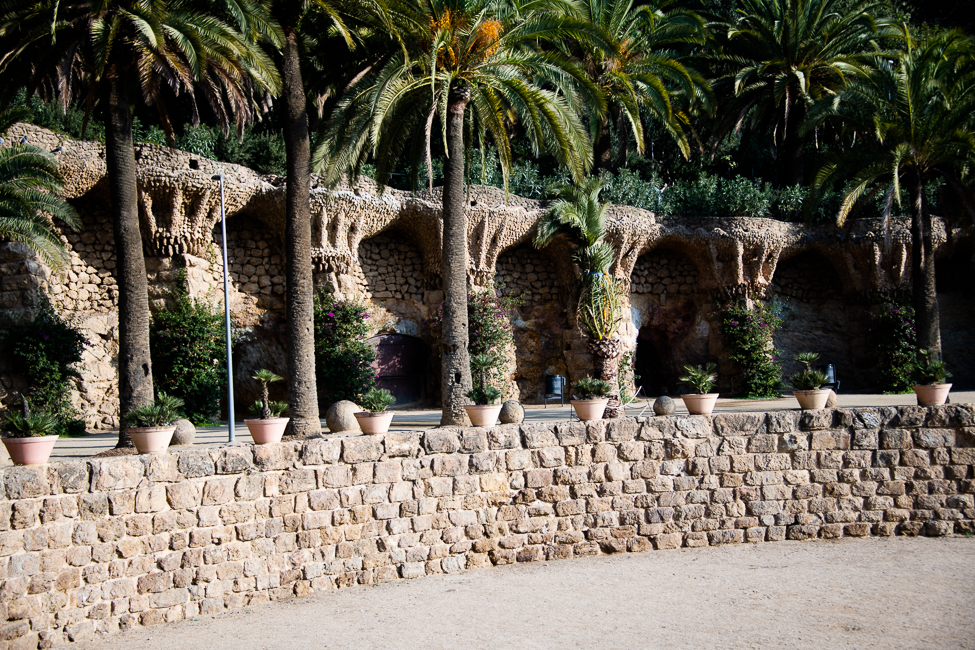 *
*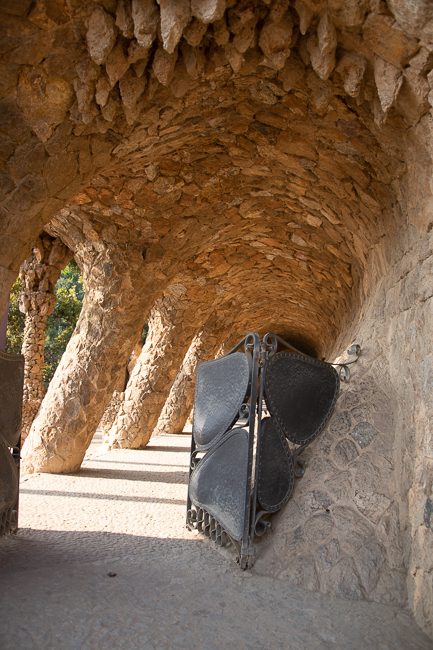 *
*
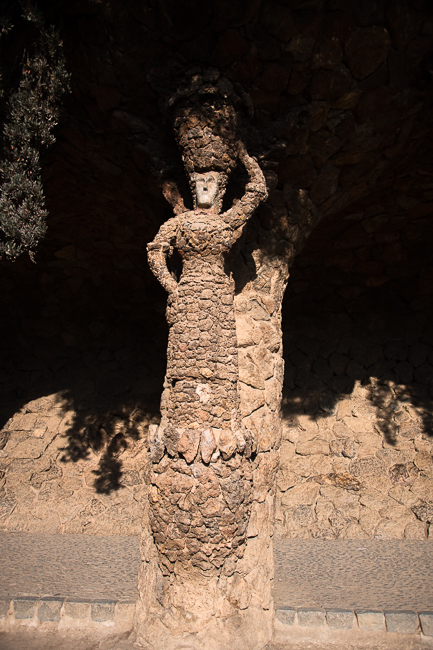
The retaining wall that supports the path that traverses the entire park takes the form of a portico with the profile of a wave. It is popularly known as the Portic de la Bugadera (Portico of the Washerwoman) because of this one column.
Eusebi Güell died in his home on the property, in 1918, and his heirs offered the park to the City Council, which agreed to purchase it in 1922.
The park was recognized as an artistic monument in 1969 and declared a UNESCO World Heritage Site in 1984.
There is so much more to both of these sites, but it is hard to believe that, even if you have never been to either of them, you know so much about them.

